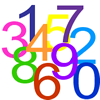Skip over navigation








Or search by topic
Number and algebra
Geometry and measure
Probability and statistics
Working mathematically
Advanced mathematics
For younger learners
Balancing
 Explore our interactive balances in all their different forms in this feature - a seesaw in the woods; a number balance with hooks for identical weights; a number balance with a tray on each side and a hanging mobile.
Explore our interactive balances in all their different forms in this feature - a seesaw in the woods; a number balance with hooks for identical weights; a number balance with a tray on each side and a hanging mobile.
We hope that these activities deepen your understanding of what it means when we say that two amounts are equal.
Seesaw Shenanigans
Age 3 to 7
Challenge Level 





A group of animals has made a seesaw in the woods. How can you make the seesaw balance?
Number Balance
Age 5 to 7
Challenge Level 





Can you hang weights in the right place to make the the number balance balanced?
Are You Well Balanced?
Age 5 to 7
Challenge Level 





Can you work out how to make each side of this balance equally balanced? You can put more than one weight on a hook.
Sweetie Box
Age 5 to 11
Challenge Level 





Max and Bryony both have a box of sweets. What do you know about the number of sweets they each have?
Interactive Balance
Age 5 to 11
Challenge Level 





In this simulation of a balance, you can drag numbers and parts of number sentences on to the trays. Have a play!
True or False?
Age 7 to 11
Challenge Level 





Without doing lots of calculations, can you decide which of these number sentences are true? How do you know?
You may also like
Digging Into Geometry
Dig deeply into geometrical ideas by having a go at the tasks in this Primary student feature.
More Playing with Numbers Upper Primary
More resources to support understanding multiplication and division through playing with numbers

